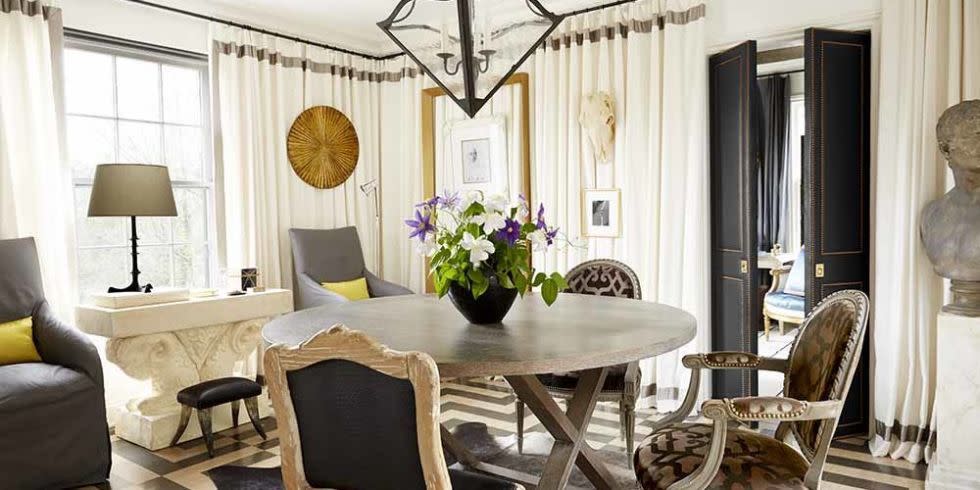Designer Andrew Brown's Colonial Revival Is A Life-Size Cabinet Of Curiosities

Whether planning his next trip or designing a room, Andrew Brown makes every decision with one word in mind: authenticity. "Travel is a huge source of inspiration," he says. "It opens your eyes to so many new things and forces you to look at everything in a different way."
Seeking native flavor, Brown insists that the pulse of a city is found through a local's eye. The same goes for his design philosophy—everything he brings to his own home is a reflection of his journeys.
Brown spent his formative years in France and West Africa. As an adult, he returned to his Alabama roots but held on to his affection for wanderlust, making world travel and great design a lifestyle priority.
Choosing items with provenance, Brown curates his collection of furniture, accessories, and art to be a veritable representation of experiences and memories. His 1930s Colonial Revival in Birmingham is the theater that tells his story. "Some pieces have been accumulated on travels, some are a reaction to places I've been, and all of it is a mix of the diverse places and styles that I've been exposed to throughout my life," he says.
Brown's seemingly disparate assemblage unites under his affinity for clean lines, bold statement pieces, and classic color palettes. In his living room, a 1960s burl-wood games table by John Widdicomb anchors the array of seating that includes a modern, armless custom sofa covered in royal-blue velvet, a Victorian gilt slipper chair, and an antique French berge?re. Global references come through in zebra-print pillows, a Syrian taboret table, and a chic ikat fabric. An antique Italian Rococo-style mirror adds dramatic flair.
"A combination of textures, patinas, layers, varying heights, order and disorder, old and new, aristocratic and tribal—that, all together, is what creates a successful space," Brown says. "It's about creating the right amount of tension between everything."
Only one room deep, the home is a series of narrow spaces that visually flow into one another. Bold focal points, such as leather- covered doors, faux finishes, large-scale prints, and black accents draw the eye from one room to the next.
Eschewing the bad connotations of the word souvenir, Brown says his keepsakes are honest mementos from his travels: "It's best to find local markets or antiques fairs to buy art, or plates, or something you will actually use. Some of my most treasured finds come from flea markets in Buenos Aires, Paris, and Bangkok."
Insisting that self-editing is key, Brown refers to a favorite mantra: "Dorothy Draper said, 'If it looks right, it is right.' Of course, I'm pretty sure she meant that it was right if she thought it looked right, but I guess I go by the same philosophy."
To Brown, the mood of a room is just as important as the look "I love ambience," he says. "Or, as my great-grandmother used to say, a place with atmosphere." He designed his own home with this in mind—draped walls envelop and add a layer of theatrical drama, lamplight, and sconces are dimmable to set just the right tone, and favorite fragrances, such as Cire Trudon candles from Paris, conjure time and place. "I like to re-create the best parts of my travel in my home through sight, scent, and touch, so I can recall those great experiences every day," Brown says.
You Might Also Like